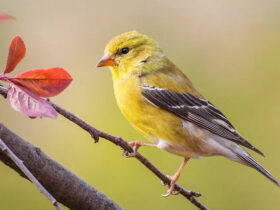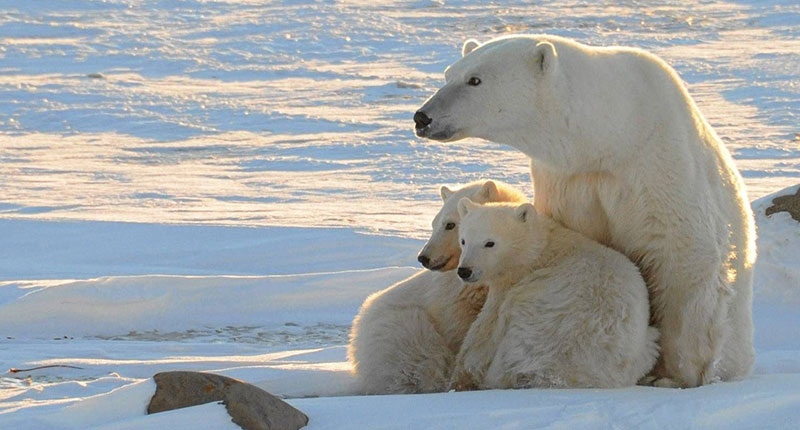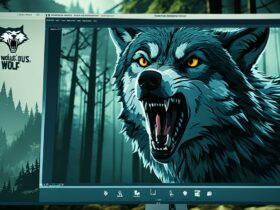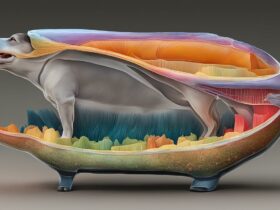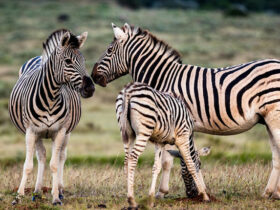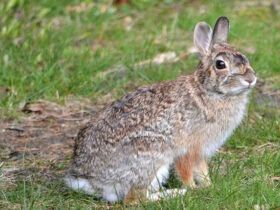Polar bears, the majestic giants of the Arctic, have captivated human imagination for centuries. With their powerful presence and unique adaptations to survive in harsh polar environments, they stand as a symbol of strength and resilience. In this article, we delve into the intriguing world of polar bears, exploring their habitat, behavior, adaptations, and the challenges they face in the modern world.
Polar bears (Ursus maritimus) are the largest land carnivores on Earth. These magnificent creatures are perfectly adapted to their frigid environment and are considered marine mammals due to their dependence on sea ice for hunting and survival. They are primarily found in the Arctic regions, where they roam across vast expanses of ice and water.
Polar Bear Habitat and Distribution
Polar bears are well-suited to the extreme conditions of the Arctic. They are found in countries such as Canada, Russia, the United States (Alaska), Norway, and Greenland. These regions provide them with a habitat rich in seals, their primary prey.
The polar bear's survival is intricately linked to sea ice, as it serves as a platform for hunting seals and provides crucial resting spots during long swims between ice floes.
Physical Characteristics of Polar Bears
Polar bears are massive creatures, with adult males weighing up to 1,500 pounds and standing over 10 feet tall when on their hind legs. Their size and bulk help them conserve heat in the frigid Arctic temperatures. Their fur, appearing white, actually consists of transparent hairs that reflect light, giving them their distinctive appearance.
Feeding Habits of Polar Bears
As carnivores, polar bears primarily feed on seals, especially ringed and bearded seals. They are excellent swimmers and use their powerful forelimbs to swim for miles in search of prey. Their hunting techniques often involve patiently waiting near breathing holes in the ice, where seals surface for air.
Social Behavior and Communication
Polar bears are generally solitary animals, but they do exhibit some social behaviors, particularly during the mating season. They use various vocalizations, including growls and roars, to communicate with each other and establish dominance.
Reproduction and Maternal Care
Mating rituals among polar bears involve complex interactions between males and females. After mating, female polar bears go through a delayed implantation process, where the fertilized egg remains dormant until conditions are favorable for pregnancy. Cubs are born in dens made of snow, and the mother provides them with exceptional care and protection during their vulnerable early months.
Polar Bears and Climate Change
Climate change poses a significant threat to polar bears. With the Arctic ice melting at an alarming rate, polar bears face challenges in finding food and suitable habitats. Conservation efforts are underway to protect their fragile ecosystem and ensure their survival in the face of this global crisis.
Polar Bears in Culture and Mythology
Polar bears have held significant cultural importance in the lives of indigenous Arctic communities. They appear in stories, art, and ceremonies, symbolizing strength, adaptability, and a deep connection to the natural world.
Interactions with Humans
Polar bears have had various encounters with humans, particularly those who live in the Arctic regions. While most interactions are peaceful, there have been instances of human-wildlife conflicts, leading to a need for coexistence strategies.
Polar Bear Tourism
Tourism centered around polar bears has become popular in recent years. While this offers a chance to observe these majestic creatures in the wild, it must be conducted responsibly to avoid causing stress or harm to the bears and their habitat.
Adaptations for Survival
Polar bears have evolved numerous adaptations that aid in their survival. Their streamlined bodies and powerful limbs make them excellent swimmers, enabling them to cover vast distances in search of food. Additionally, their thick layer of fat provides insulation and energy reserves during lean times.
Threats and Challenges
As with many wildlife species, polar bears face various threats from human activities. Pollution, oil drilling, and shipping in the Arctic can harm their habitats and lead to harmful contaminants entering their food chain.
The Role of Polar Bears in the Ecosystem
Polar bears play a crucial role in the Arctic ecosystem as apex predators. By regulating seal populations, they help maintain a balanced food chain and contribute to the overall health of the region.
Research and Conservation Efforts
Researchers and conservationists play a vital role in understanding polar bears and implementing strategies to protect their population. Studying these creatures helps us gain insights into their behavior and assists in making informed conservation decisions.
Conclusion
The world of polar bears is fascinating and complex. These magnificent creatures have adapted remarkably to their icy world, but they face numerous challenges due to climate change and human activities. Protecting their habitat and promoting responsible coexistence are crucial steps to ensure the survival of these iconic Arctic giants.
FAQs
- Are polar bears dangerous to humans? While polar bears are powerful predators, they typically avoid interactions with humans. However, caution should be exercised in polar bear territory to prevent any potential conflicts.
- How do polar bears stay warm in the cold Arctic environment? Polar bears have a thick layer of blubber and dense fur, which provides excellent insulation and helps them retain body heat in the freezing temperatures.
- Do polar bears hibernate like other bears? Unlike some other bear species, polar bears do not undergo true hibernation. Pregnant females enter a dormant state in their dens, but they do not experience a significant drop in body temperature.
- How do climate change and melting ice affect polar bears? Melting ice reduces the availability of hunting grounds and food sources for polar bears, leading to increased challenges in finding sustenance and raising their cubs.
- What can we do to help protect polar bears? Supporting conservation efforts, reducing our carbon footprint, and promoting sustainable practices can all contribute to protecting polar bears and their fragile habitat.




